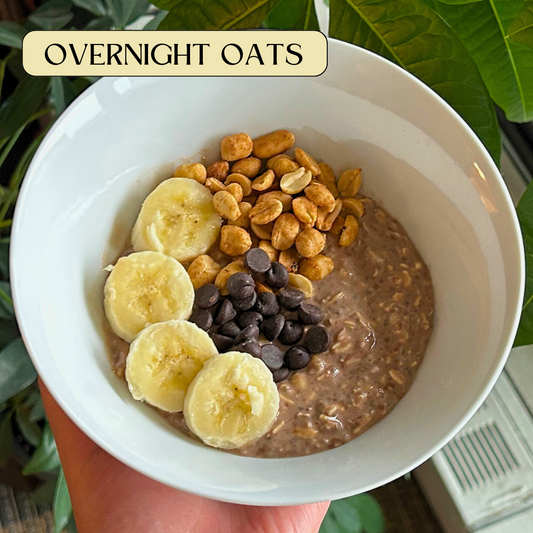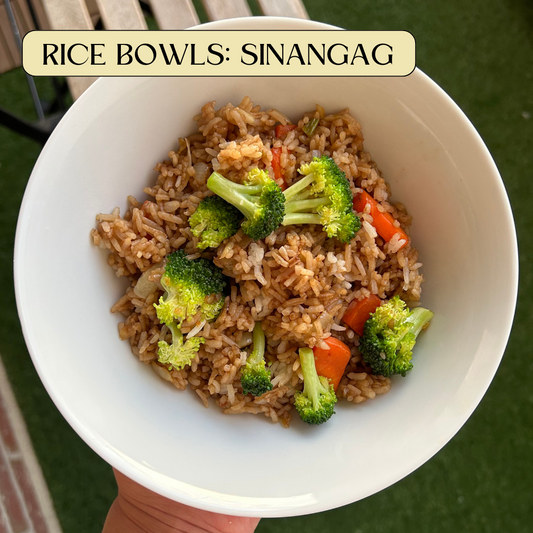A Guide to Adobo: One of the Many Filipino National Dishes
Adobo is considered the unofficial national dish of the Philippines.
It's a very popular dish - and for good reason. It's simple to make, and can be made with almost any protein: pork, squid, and the most common protein, chicken. Adobo is a savoury and tangy braised dish that's typically served over rice. Although there are many regional and household variations, the main ingredients include a protein, soy sauce, vinegar, garlic, peppercorns, and bay leaves.
Growing up in a Filipino household, it's safe to say that I've had my fair share of adobo. I don't eat meat anymore, but if I did start eating it again, the first thing I'd eat is my mom's chicken adobo. Sometimes, I'll make an adobo marinate into a reduction, mix it into some rice, and serve it with eggs or a plant-based protein (eggs and meat alternatives can't handle the marinating/braising process as well as meat or seafood).
In this blog, I will be going through the history of the dish, some different variations, and my go-to recipe for this Filipino household classic.

The History of Filipino Adobo
Adobo stems from traditional Filipino cuisine, neighbouring ingredients, and colonial influences.
Adobo is derived from the Spanish word "adobar", which means "to marinate" or "to dress". Before 16th century Spanish colonization to the islands, indigenous Filipinos have long since used methods of preserving meat with vinegar and salt to prolong spoilage in such a tropical climate.
Soy sauce was introduced to the Philippines by Chinese traders and immigrants during the precolonial and early colonial periods (most likely during the Ming Dynasty, 1368-1644AD). Trade between the Philippines and China started long before Spanish arrival, dating back to the 10th century.

Chart of the Philippines by Father Pedro Murillo Velarde, Manila (1734)
The Spaniards then brought ingredients, such as bay leaves (which were native to the Mediterranean, although some believe that the introduction to bay leaves could also predate the Spanish via Indian, Malay or Chinese traders), and cooking methods, such as marinating and stewing.
That being said, with the culinary influences from both the Spanish and the Chinese, the Philippines adapted methods of marinating and stewing to accommodate new ingredients and cooking methods, alongside local ingredients and cuisine.
Adobo Variations
Filipino Adobo is a savoury and tangy braised dish that's typically served over rice. Although there are many regional and household variations, the main ingredients include a protein, soy sauce, vinegar, garlic, peppercorns, and bay leaves.
Some Adobo variations in the Philippines can include additional ingredients such as coconut milk or sugar. There's even adobo variations with the subtraction of some ingredients, such as Adobong Puti - which excludes soy sauce, using salt instead, and can be considered the closest variation to a pre-colonial adobo recipe.
Not only are there a number of adobo recipe variations within the Philippines, but there are numerous adobo recipes, sauces and spices that all come from countries that were also colonized by Spain.
Mexican Adobo
Mexican Adobo is smokey, spicy and rich. It's made from a blend of dried chillies, vinegar, garlic, spices (such as cinnamon and cumin), and other local ingredients, such as tomatoes. It's formed as a sauce and can be used as a marinade, simmering sauce, or condiment.

Puerto Rican Adobo
Puerto Rican Adobo is savoury and very aromatic. Puerto Rican Adobo seasoning is made from a dry blend of salt, garlic powder, onion powder, pepper, oregano, and other spices. It is used as a rub/seasoning for meat, seafood and veggies, and can be made into a marinade when vinegar and/or olive oil is added.
Adobo Peruano
Peruvian Adobo is savoury and tangy. It's a stew, usually made with pork, composed of vinegar, garlic, onions, cumin, peppers, Peruvian chicha de jora (corn beer), and other spices.
Adobo Uruguayo
Uruguayan Adobo is savoury, tangy, and full of garlic. It is composed of vinegar, garlic, pepper, oregano, and other spices. It's known as an adobar as a condiment, and as mojo as a sauce.
My Recipe for Chicken Adobo
My mom taught me this recipe... more or less. My mom measures ingredients with her heart, so it took some trial and error to determine the best measurements. I honestly think this recipe is the epitome of Filipino adobo (please don't fight me on this lol).
When making this dish, I recommend making double the batch because leftover adobo tastes better the next day since the chicken sits in the sauce even longer!
This recipes makes 2-3 servings. The prep and cook time takes at least 2 hours, but it could take more depending on how long you choose to marinate the chicken.
Ingredients
- About 6 pieces of chicken (usually, adobo is made with dark meat, but try it with white meat if you'd like - the marinate will tenderise your chicken)
- Half a bulb of garlic, finely minced (could be more or less depending on preference)
- ⅓ cup of soy sauce
- ⅓ cup of vinegar (I like to use rice vinegar, but white vinegar works well too)
- 4 bay leaves
- 1 teaspoon of whole peppercorns
- 1 small onion, chopped
- Green onions or chives
- Cooked white rice to serve with the chicken
- Dried chilli flakes (optional)

Chicken marinating in adobo
Directions
- Prepare your marinade. In a container, mix in half your minced garlic, soy sauce, vinegar, the bay leaves, and peppercorns.
- Wash and pat dry your chicken, then add to your marinade. Make sure the chicken is thoroughly coated and submerged in the marinade.
- Cover then store in the fridge for at least an hour, or overnight. The longer it marinates, the tastier!
- While you wait for your chicken to marinate, chop your onion, then set aside. If you’re leaving your chicken overnight, do this before cooking and serving.
- Once your chicken is done marinating, heat up a well-oiled pot on medium
- When the oil is hot, saute your onion, the rest of your garlic, and chilli flakes if you’re feeling spicy
- Once the onions are soft, set them aside in the pot, remove your chicken from the fridge, and place the chicken on the heat. If your chicken has skin, place it skin-down.
- After about 15 minutes, or when the underside is golden brown, flip your chicken. Cook for another 10 minutes
- After both sides of the chicken are golden brown, lower the heat, then slowly pour in your marinade, alongside 1½ cups of water.
- Cover then let simmer for about 30-40 mins - or until the sauce reduces - and stir every so often so that the chicken doesn’t stick to the bottom of the pot.
- As the sauce reduces, prepare your rice.
- Once the chicken is done, serve over rice alongside some of the sauce and some chives on top!

Feel free to use another protein, such as pork, squid, or tofu - the marinade and cooking process works the same, although it may be a shorter or longer cook time depending on the protein you use. I also love to top off the dish with dried/dehydrated garlic to add some crunch!
Sige, kain tayo!





